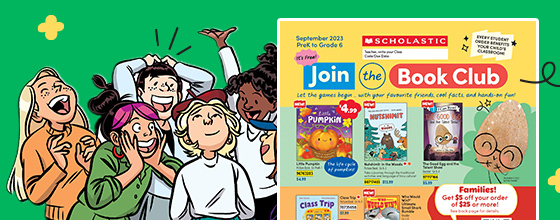Originally published by Scholastic Parents on January 1, 2021
Versioned for Scholastic Canada
You’ve spent years reading storybooks, store signs, and cereal boxes to your child. But now that they’re learning to read out loud by themselves, story time might feel like new territory. When your growing reader furrows their brow with every word and stumbles through most sentences, there are certain steps you can take to set them up for lifelong reading success.
Reading fluency is the ability to read out loud accurately, at a good pace (not too slow or too fast), and with expression. “Although it’s typically measured in school when children start reading on their own, such as at the end of first grade, reading fluency is something you can start working on with them even before then,” says Helen Maniates, Ph.D., associate professor of teacher education at the University of San Francisco.
And it certainly pays to, because reading skills can help your child get more out of every subject in school. “Reading fluency contributes to reading comprehension,” says Maniates. “When children read slowly, don’t pay attention to punctuation, or struggle with particular words, they lose track of the ideas in the text.” Set your child up for academic success with these easy — and fun! — reading approaches.
The more often your child hears fluent reading, the more likely they are to pick it up. “Start by reading a paragraph or a full page from a book, and then ask your child to read it,” says Brook Sawyer, Ph.D., an associate professor focusing on language and literacy development at the College of Education at Lehigh University. “When you provide that model, it’s an opportunity for the child to get familiar with the story, understand the pacing, and then mimic you.”
As you model, channel your high school drama class: Read with exuberant, Oscar-worthy expression and pause at the appropriate times (at commas, periods, etc.) to demonstrate the cadence of our language. It’s also helpful to play audiobooks in the car to squeeze in extra modeling time when you’re on the go, says Sawyer.
If you’ve ever learned a new language, you know how difficult it can be to decipher where one word ends and the next begins when listening to a conversation. Your little learner might feel the same way when they try to follow along during story time. That’s where tracking — or running your finger under words as you read them — comes in handy. You can track while you’re reading to your child, or ask them to track when they’re reading out loud.
“When kids are first learning to read, it’s really important for them to touch each word to understand the correspondence between the spoken and written language,” says Maniates. “It’s a stepping-stone strategy. Eventually, they’ll be able to tackle larger phrases without reading word by word.” To make tracking words more fun for your child, equip them with plastic Martian or witch fingers!
Not to worry: No singing skills required! Choral reading simply means you read a story out loud, and ask your child to read along with you at the same pace. This helps them understand what fluent reading feels like, and gives them the chance to practise it themselves at your pace, says Sawyer. It’s OK if you’re a tiny bit ahead of them — just be sure to pick a book that they can already read themselves. That way, they’re working on pacing and accuracy rather than decoding new words.
You may notice that your child struggles with certain words like “walk” or “house,” also known as sight words. “These are words that are not decodable by sounding them out phonetically,” says Maniates. “They often overlap with high-frequency words, which are those that appear very often in children’s texts.” When your child memorizes what these words look like and can instantly recognize them, they won’t have to spend valuable reading time (and brainpower!) trying to sound them out.
Turn teaching sight words into a game: Spell the words out with magnetic letters; write them on a large piece of paper and ask your child to splat the correct word with a fly swatter when you say it; or use activity packs to help them easily learn them anywhere.
Just like us grown-ups, kids are more likely to fumble over their words when they feel nervous or uncomfortable. Set up an inviting stage for them to practise reading stories out loud by creating an audience out of their favourite stuffed animals or recruiting your family pet to listen along. “Some kids really don’t like to read in front of other people, either because they feel shy or feel pressure around it,” says Sawyer. “Start by reading a story together, and then for extra practise, set up a pretend audience that they can read out loud for.”
Eventually, this might also help your child read with more expression. “Reading out loud is almost like a performance, because you’re thinking about your voice, the volume, the pitch, the tone, and you might even be making facial expressions or gestures,” says Maniates. “We want kids to do this when they’re young because that’s how they’ll internalize stories when they read silently to themselves later on.”
Every so often, when your child is reading out loud, record a passage and then listen to it together. You might celebrate that they read on pace, then record it a second time while aiming for more expression. “Set a specific goal for the session, and decide together what you want to do a little better,” says Sawyer. Just be sure to make it a relaxed setting (this is something you can do in jammies and on the sofa!) and focus on the positive strides your child is making.
It’s also a good time to incorporate texts that are easy for your child to read. “Parents are often concerned with getting their kids ahead in reading, but when they’re struggling, going back to easier texts can be really helpful,” says Maniates. “It builds confidence and consolidates their skills so they can expand upon them.”
 Book Clubs
Book Clubs
Scholastic Book Clubs helps kids discover the joy of reading. Together, we put can’t-miss books into kids’ hands—at can’t-miss prices, while also giving back to a teacher's classroom!
Visit us online Book Fairs
Book Fairs
Bookjoy or bust! Millions of children have discovered books—and a lifelong love of reading—at a Scholastic Book Fair.
Visit our site